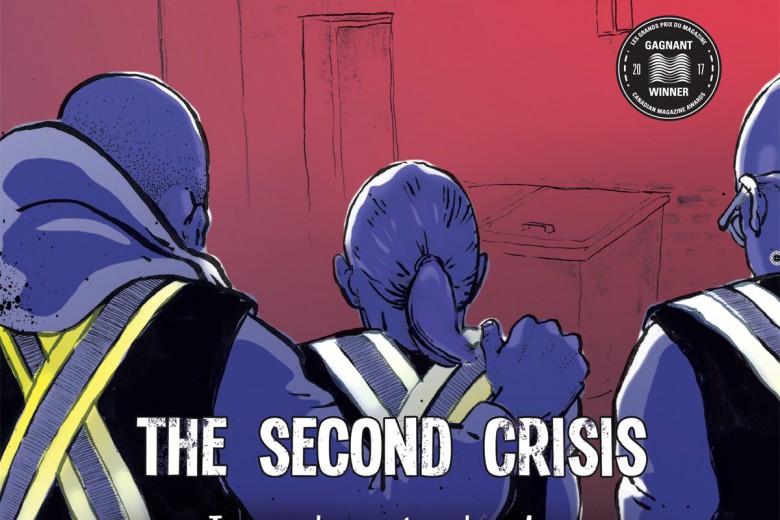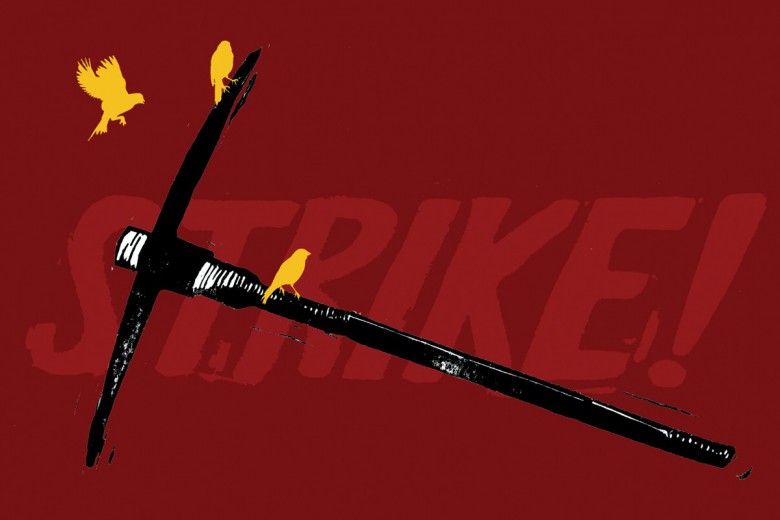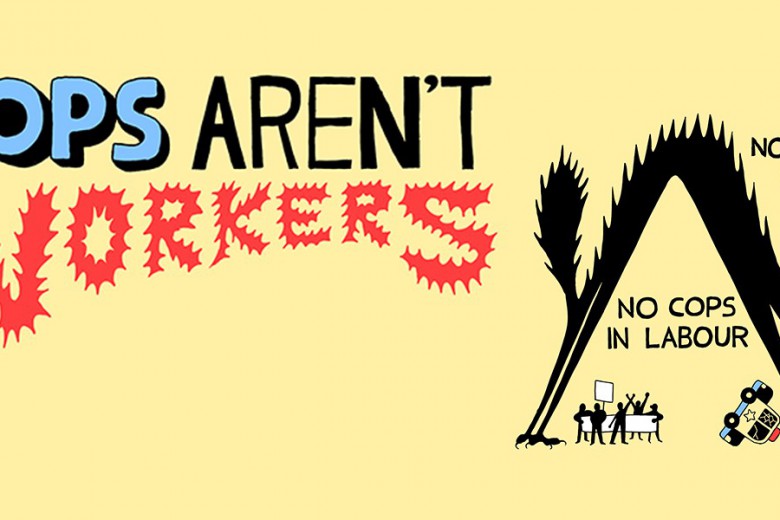Unions in Court: Organized Labour and the Charter of Rights and Freedoms
By Larry Savage and Charles W. Smith
UBC Press, 2017
Unions in Court: Organized Labour and the Charter of Rights and Freedoms, co-authored by Larry Savage and Charles W. Smith, examines the labour movement’s increasing use of the Charter of Rights and Freedoms to defend and expand the rights of Canada’s working class. Steeped in history yet rife with contemporary cases, the book provides an important and critical look at labour’s political weakness under neoliberalism, both at the ballot box and under a string of right-wing governments across the country.
In the introductory chapter, the authors ask, “How did Canada’s labour movement, within the span of three decades, go from being indifferent, if not openly hostile, to the prospect of constitutionally protected labour rights in the 1980s to being strong proponents – and in some cases, champions – of constitutionally protected collective rights for workers?” This question sets the trajectory of the book. Beginning with an analysis of labour rights in the pre-charter era, the labour movement’s absence during the implementation of the charter, and its early struggles under it, the book then tackles a curious turn that occurred in the late 1990s and early 2000s, when unions increasingly relied upon the charter to advance their members’ rights.
Organized labour, Savage and Smith note, was absent from the charter’s implementation phase for a variety of reasons – notably, a concern that charter rights would be too individualistic, that the legal system had historically not been an ally to workers, and to avoid creating divisions between the English-Canadian and Québécois labour movements. This outlook has changed considerably over the past 36 years.
Section 2(d) of the charter guarantees everyone the “fundamental freedom” of association. In each of the Supreme Court “Labour Trilogy” cases of 1987 (Alberta Reference, PSAC [Public Service Alliance of Canada] v. Canada, and RWDSU [Retail, Wholesale, Department Store Union] v. Saskatchewan), organized labour unsuccessfully argued that freedom of association, in the case of a union, included the right to bargain collectively. The court’s interpretation of this section has since evolved.
There are many examples of organized labour using the legal system and the charter to advance the rights of their members, and Unions in Court offers important lessons for rank-and-file union activists, union leaders, academics, and those with a broad concern for the advancement of workers’ rights in Canada.
Today there are many examples of organized labour using the legal system and the charter to advance the rights of their members, and Unions in Court offers important lessons for rank-and-file union activists, union leaders, academics, and those with a broad concern for the advancement of workers’ rights in Canada. Unions in Ontario’s education sector recently settled a legal challenge with the provincial government in response to the Putting Students First Act (commonly known as Bill 115), legislation that allowed the Ontario government to limit the scope of what could be bargained for and to impose a collective agreement if an agreement was not reached by a specified date. The government agreed to pay over $100 million in damages.
There is a coordinated strategy among unions to use the legal system to advance workers’ rights, as CUPE National’s president, Mark Hancock, has noted. “Even before the Bill 115 case was heard,” Hancock said in a statement, “CUPE took the lead in pushing the Saskatchewan Federation of Labour case forward … these cases are building a strong body of jurisprudence in Canada that confirms workers’ Charter right to freedom of association. Now, with this remedy settlement, we can clearly say to governments, if you violate workers’ rights, it will cost you.”
In Manitoba, the Partnership to Defend Public Services, a union coalition, is mounting a legal challenge to the Conservative government’s Bill 28, which unilaterally imposes a public sector wage freeze. Unifor’s western regional director, Joie Warnock, asserts, “Premier Pallister wants to strip workers of constitutionally protected rights,” adding, “It failed in Saskatchewan under Brad Wall, and it will fail again with the PC government in Manitoba.”
These examples validate Savage and Smith’s assertion that “in the wake of landmark Supreme Court decisions in B.C. Health Services, MPAO [Mounted Police Association of Ontario], and SFL [Saskatchewan Federation of Labour] v. Saskatchewan, organized labour has clearly become more emboldened to make broader rights-based claims on behalf of union members and the working class more generally.” In B.C. Health Services and MPAO, the Supreme Court affirmed that the charter protects the right to bargain collectively. The B.C. Health Services decision in 2007 effectively overruled the court’s earlier decisions in the 1987 Labour Trilogy. In SFL v. Saskatchewan the court ruled that the charter also contains a constitutional right to strike. However, despite the successes of these cases, and the Bill 115 settlement in Ontario, charter-based legal challenges are not without their shortcomings.
Although the courts may represent “an increasingly reasonable and pragmatic strategic route for unions” to address the erosion of labour rights, the book’s concluding chapter rightly forces readers to turn their minds to the limitations associated with a rights-based framework. As the authors note, “it is difficult to contemplate how judicial decisions alone can fundamentally transform society.” While raising the limitations of labour’s rights-based judicial strategy, they also note that an increased reliance on the judicial system is likely to depoliticize working-class struggle in the long term.
In light of the ongoing crisis in social democracy at the ballot box, the deepening of neoliberalism, and the increasing frequency with which unions rely on the charter and the legal system, Savage and Smith’s critical and nuanced analysis is much needed. The book forces both proponents and opponents of the concept of “labour rights as human rights” to reflect on their own deeply held beliefs, while making a strong argument that a true political challenge capable of fundamentally altering the course of neoliberalism will not occur by singular, or even a series of, successful constitutional challenges by the labour movement.







